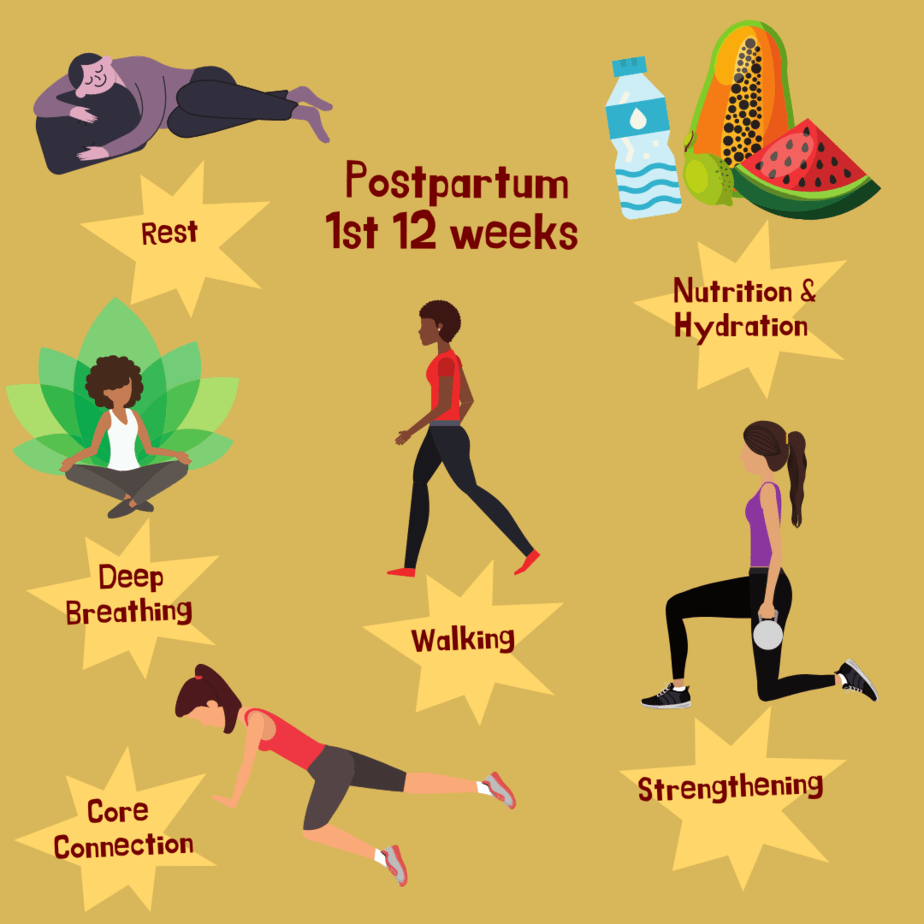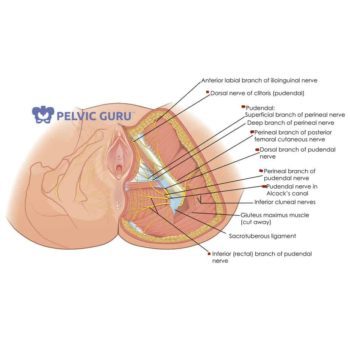Mechanics of Deep Breathing
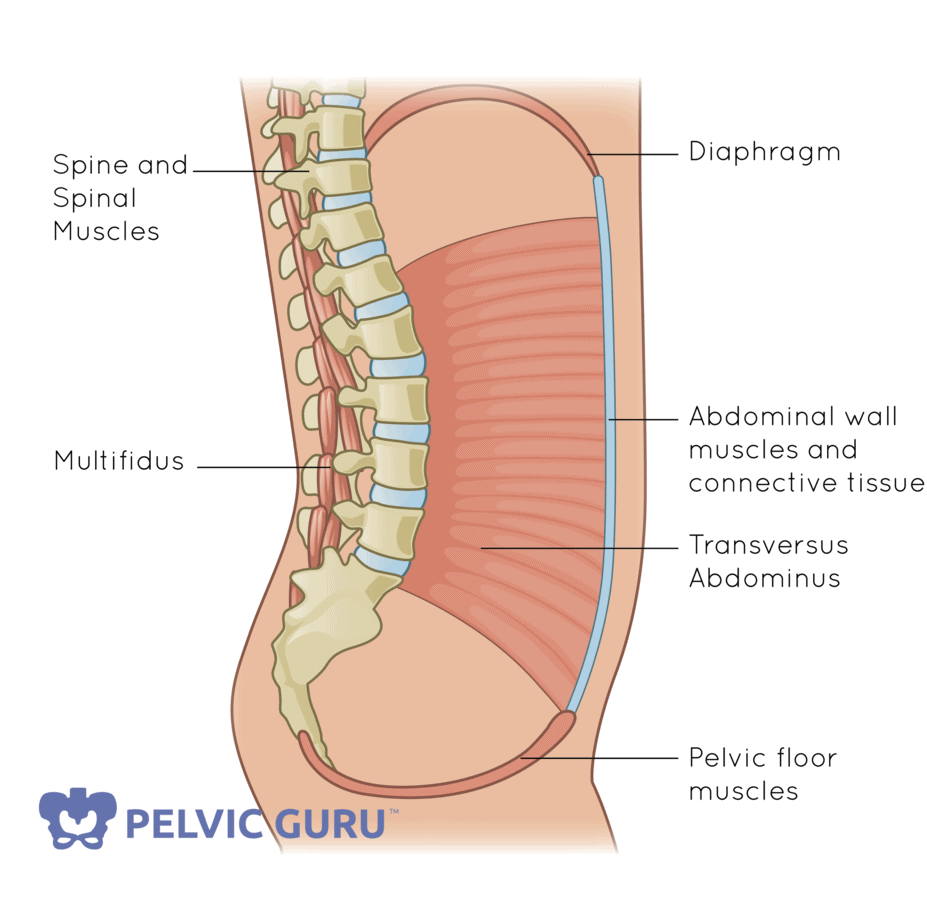
Deep breathing exercises build core connection and body awareness. It also helps improve mobility of the core through mechanical pressure changes and elastic potential of soft tissue structures like organs, fascia, and muscles.
Diaphragmatic breathing, sometimes called belly or deep breathing, involves actively pulling the diaphragm muscle downward with each inhalation, allowing the lungs to fill more fully.
Benefits of Deep Breathing
Deep breathing exercises help regulate the nervous system and reduce stress. Deep breathing can:
- Lower heart rate and blood pressure
- Reduce stress cortisol hormones
- Reduce muscle spasm and pain
- Reduce fight, flight, or freeze and increase vagal input for rest, digestion, relaxation
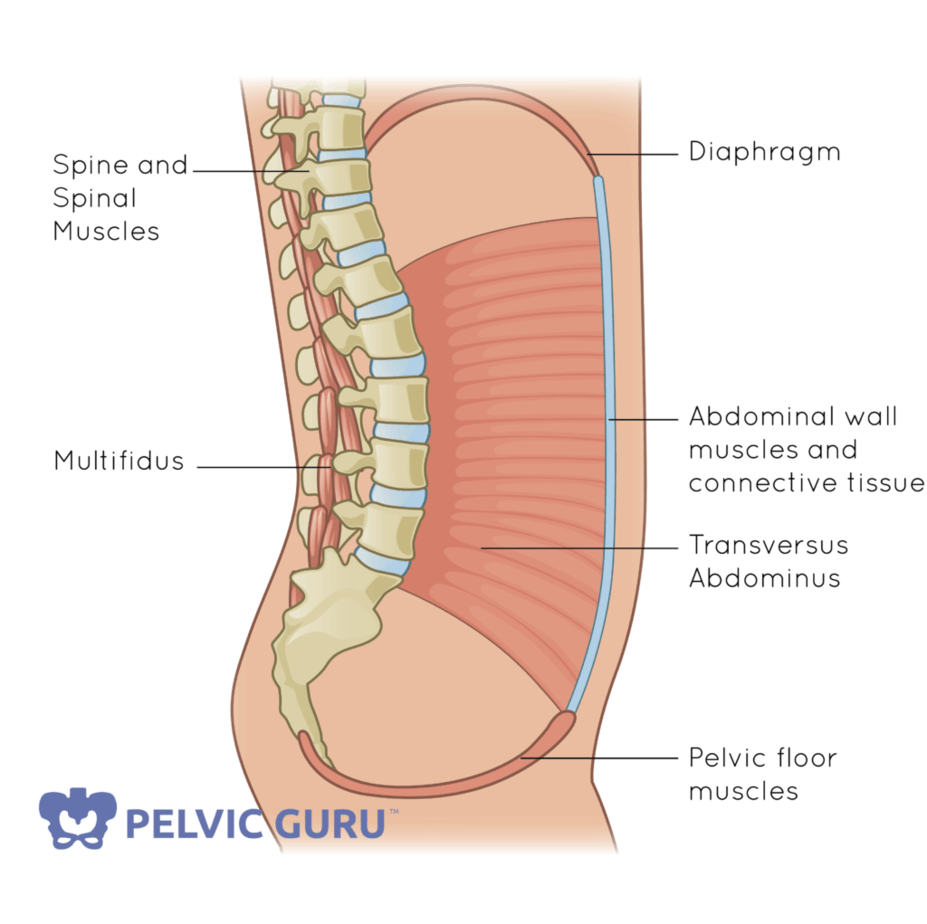
What is the core?
The core musculature provides a strong foundation for your body to function optimally.
These muscles:
- act as stabilizers to ensure efficient movement
- provide integral support for posture and internal organs
- control abdominal pressure
- are vital for healthy sexual, bowel, and bladder function

Think of the core and abdomen like a balloon: diaphragm on the top, pelvic floor on the bottom, the spinal muscles at the back, and the abs on the front and sides.
By contracting just your abs, you are actually increasing the pressure throughout the rest of the system. The key is to coordinate the contraction of this group of muscles with breathing to minimize this extra pressure, prevent future injury, and provide a solid foundation for all other movements of your body.
To practice deep diaphragmatic breathing, focus on equal 3D movement between the ribcage, abdomen, while coordinating the muscles of the diaphragm, low back and pelvis.
Begin sitting in a neutral posture with hands on your belly. Try inhaling and exhaling through the nose, with gentle focus on slowing down the breath rate. Increasing the length of your exhale will help reduce muscle tone and facilitate relaxation by turning down your sympathetic nervous system, or fight flight mechanism, and will help increase your parasympathetic nervous system, the body’s peaceful resting state.
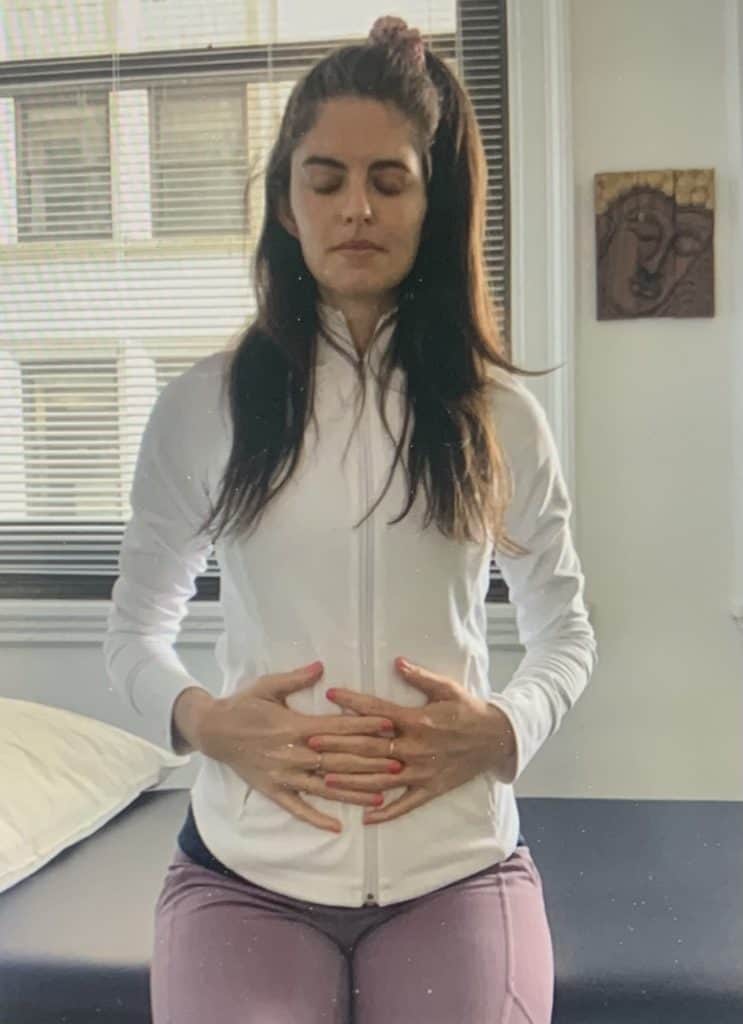
We Can Help!
Body Harmony Physical Therapy offers one-on-one treatment sessions and provides individualized treatment programs for each person.
This blog was created for informational purposes only and is not intended to be a substitute for professional medical advice, diagnosis, or treatment. Always seek the advice of your physician or other qualified health provider with any questions you may have regarding a health condition or before beginning a new exercise routine.



